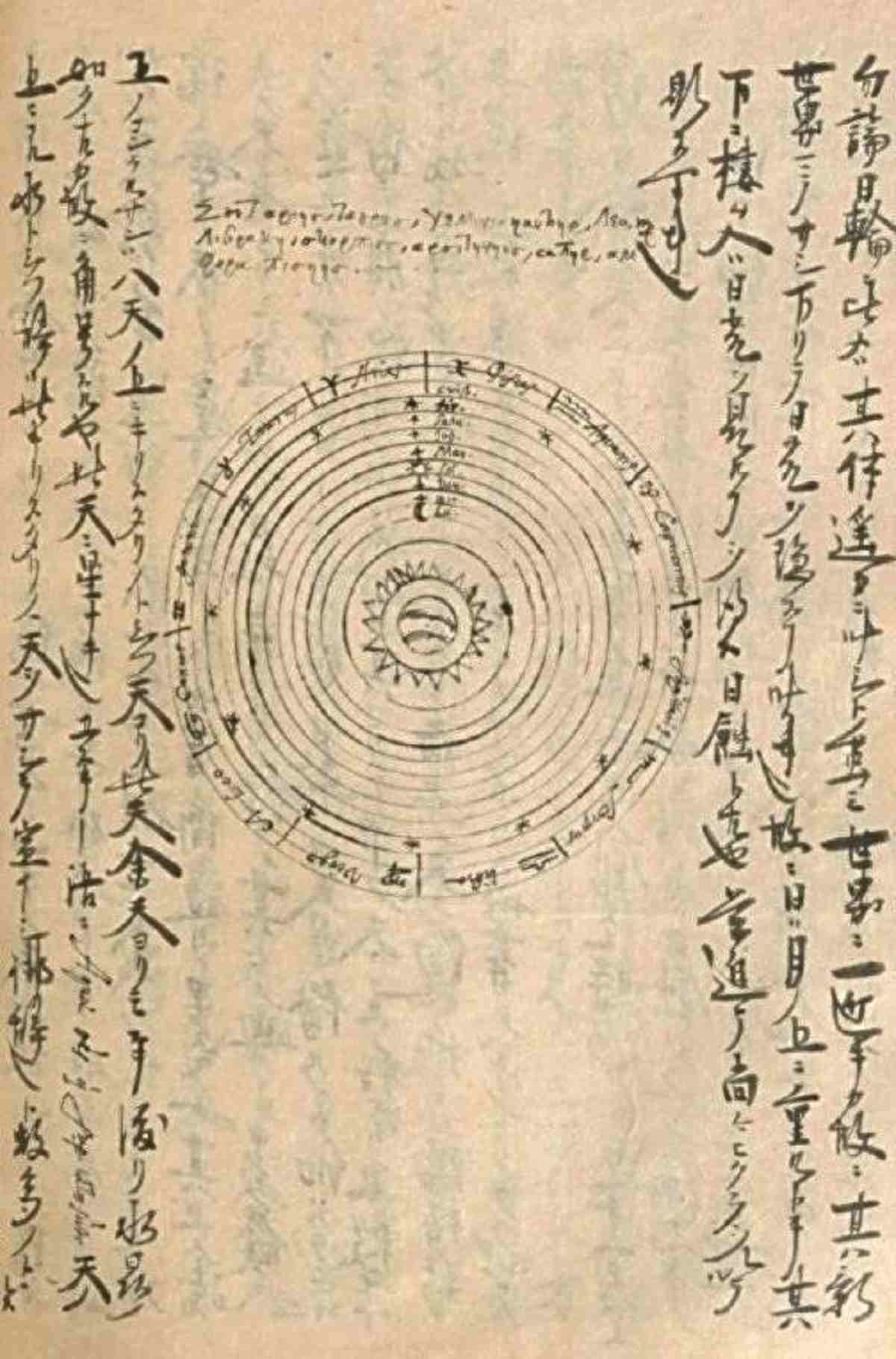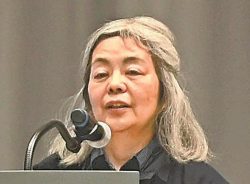
“Sufera no Nukigaki,” a Japanese translation of a Western cosmology book based on a Christian thinking, includes a drawing of the Earth at the center of the cosmos.
6:00 JST, September 26, 2023
A translation believed to be the oldest Japanese-language text on Western science has been discovered at a German library.
The translation — thought to date to the late-16th or early-17th century — rewords a Western book on cosmology compiled by a Spanish missionary active in Japan at the time.
The original tome was compiled by Pedro Morejon, who came to Japan in 1590 during the Azuchi-Momoyama period (1568-1600).
In his book, Morejon posited a geocentric theory of celestial motion from a Christian perspective.
One expert said the newly discovered manuscript reflected the early introduction of science in Japan, at a time when Western science and Christianity were closely entwined.
Ideas relating to Western science were first brought to Japan in the second half of the 16th century by Christian missionaries who drew upon “De Sphaera” (On the sphere), a Latin textbook on astronomy. The freshly unearthed manuscript, titled “Sufera no Nukigaki” (Selections on the sphere), transliterates “sphaera” into katakana characters.
The translated text also incorporates a drawing depicting the Earth at the center of the cosmos.
Morejon, a Jesuit missionary, arrived in Japan in 1590 as part of the returning “Tensho Boys” mission to Europe and engaged in missionary work until the Edo shogunate outlawed Christianity in 1614. The translation is thought to date from around that time.
While the shogunate’s ban on Christianity was in place, Western science books were translated into Japanese with elements of Christian-religious thinking removed.
It was previously believed that the oldest extant Japanese translation of Western science-related thinking dated to the mid- to late-17th century.
The Japanese translation of “De Sphaera” was discovered at the Herzog August Bibliothek in Germany by Sven Osterkamp, a Ruhr University Bochum professor who specializes in historical linguistics.
Co-researcher Ryuji Hiraoka, an associate professor at Kyoto University and an authority on science history, said the manuscript must have been completed prior to the religious ban, as it contains Christian ideology.
“It’s probably the oldest [Japanese] translation of Western science,” Hiraoka said. “It hints at the translator’s ingenuity in transliterating words that were difficult to express in Japanese in order to help open the door to Western science.”
Yoshimi Orii, a professor of Spanish literature at Keio University, described the translation as “a historical document that shows global academic exchanges.”
“It shows the process of acceptance in Japan of scientific knowledge written in Latin,” Orii said.
"Culture" POPULAR ARTICLE
-

Van Cleef & Arpels Dazzles with Art Deco Artisanry at Tokyo Exhibit
-

Disney’s ‘Twisted-Wonderland’ Animated Series Puts Villains in Spotlight: New Show Features School Inspired by Classic Disney Films
-

Ayumi Hamasaki’s Shanghai Concert Canceled Day Before Schedule as Part of Beijing Backlash
-

‘The World Masterpiece Theater Series’ Celebrates 50 Years; Animator Looks Back on Creating Anime Classics
-

Popularity of Piggy Banks Across Time and Place Seen at Bank’s Museum of Money Boxes in Hyogo Pref.
JN ACCESS RANKING
-

Tokyo Economic Security Forum to Hold Inaugural Meeting Amid Tense Global Environment
-

Keidanren Chairman Yoshinobu Tsutsui Visits Kashiwazaki-Kariwa Nuclear Power Plant; Inspects New Emergency Safety System
-

Imports of Rare Earths from China Facing Delays, May Be Caused by Deterioration of Japan-China Relations
-

University of Tokyo Professor Discusses Japanese Economic Security in Interview Ahead of Forum
-

Japan Pulls out of Vietnam Nuclear Project, Complicating Hanoi’s Power Plans
























